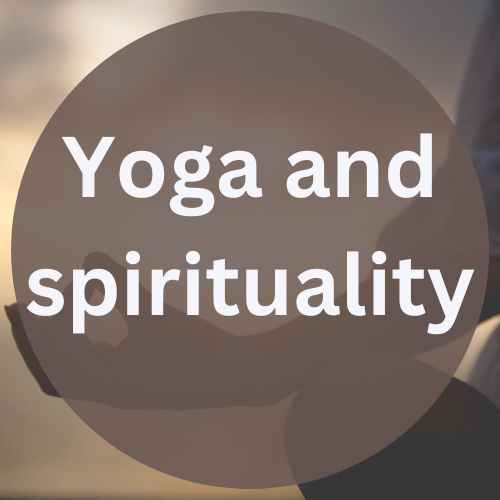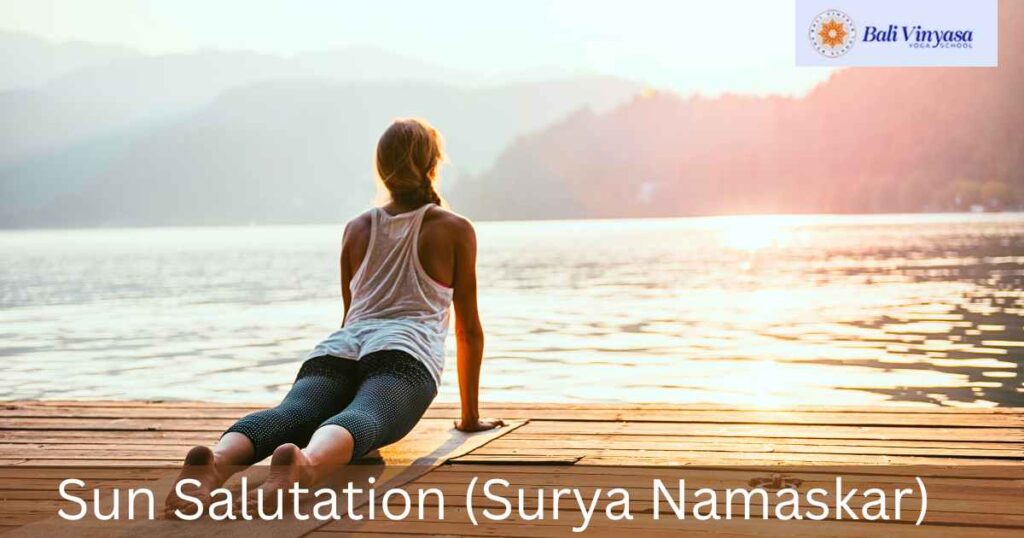Yoga and Spirituality: 6 Things You Probably Didn’t Know

Introduction
Yoga and spirituality are two concepts often intertwined, yet their depth and interconnectedness go beyond the physical postures we commonly associate with yoga. When we hear about yoga, we think of stretching and poses. But there’s more to it. Yoga is like a big adventure that connects with something deeper inside us, something we might call our spirit or inner self. In this exploration, we will uncover five lesser-known aspects of yoga and spirituality.
Yoga and Spirituality: Historical Roots
Ancient Origins of Yoga:

Yoga is not a recent wellness trend; its roots take us back to ancient civilizations. From the Vedic period to the development of classical yoga by Patanjali, the practice has evolved over 1000 years. Knowing where yoga comes from helps us better appreciate the wisdom it holds.
Beyond Physical Asanas
Though many of us are familiar with the physical poses (asanas) in yoga, it’s important to realize that these poses are just a small part of the whole practice. There’s more to yoga than just stretching and bending. There are other aspects called “limbs” that contribute to the complete practice.
- Pranayama (Breath Control):

This involves focusing on and regulating your breath. The way you breathe affects your energy and concentration. Pranayama techniques help improve breath awareness and control, promoting overall well-being.
- Meditation:

It’s not just about physical movement; yoga includes practices that calm the mind and enhance mental clarity. Meditation is one such practice. It involves training the mind to achieve a state of focused relaxation, promoting a sense of calm and mental peace.
- Ethical Guidelines (Yamas/Niyamas): These are principles that guide our behavior. Yamas are ethical standards in our interactions with the world, while Niyamas are personal observances that promote self-discipline. Following these guidelines encourages conscious living and contributes to personal and spiritual growth.
When we combine these elements – the physical poses, breath control, meditation, and ethical guidelines – we get a comprehensive system. It’s not just about exercising the body; it’s an approach to improving your physical health, calming your mind, and helping personal and spiritual development. Each aspect complements the others, creating a well-rounded practice.
Yoga and Science
Scientists have been studying yoga, and their findings show that practicing yoga is good for our health. Yoga has been linked to reducing stress and anxiety, as well as improving the health of our heart. The research also highlights that yoga has positive effects on our nervous system, which is responsible for managing stress and other bodily functions. In simpler terms, there’s scientific evidence that supports the idea that doing yoga is good for our overall well-being.
Spiritual Aspect of Yoga

Yoga is more than just moving your body – it’s like a journey to understand yourself better and find a sense of peace inside. When we talk about the spiritual side of yoga, we mean discovering a deeper connection with who you are. It’s like going on an adventure of personal growth, where you learn more about yourself and how everything in life is connected. So, yoga is not just exercise; it’s a way to explore and find harmony within yourself and with the world around you.
Yoga Philosophy
Let’s talk about the big ideas behind yoga, like Advaita (oneness), karma (the idea that our actions have consequences), and the pursuit of self-realization (understanding who we really are). These are like the guiding principles of yoga philosophy. They give us a way to think about the purpose of life and help us develop a mindset. It’s about carrying these ideas into our everyday lives and trying to live in a way that aligns with these deeper understandings. So, yoga philosophy is like a roadmap for thinking about life and how we want to live it.
Common Misconceptions about Yoga
Let’s clear up some common misunderstandings about yoga:
- Yoga is Only for the Flexible:
Myth: Some people think we need to be super flexible to do yoga.
Reality: Yoga is for everyone, regardless of flexibility. It’s about improving your own flexibility and strength over time.
2. Yoga is Religious:
Myth: There’s a misconception that yoga is tied to a specific religion.
Reality: While yoga has roots in ancient spiritual traditions, modern yoga classes are often secular and can be practiced by people of any religion or no religion at all.
3. Yoga is Only About Physical Exercise:
Myth: Many believe yoga is just a form of physical exercise.
Reality: Yes, there’s a physical aspect, but yoga also includes breathing exercises, meditation, and ethical guidelines, making it a holistic practice for overall well-being.
4. You Need Special Clothing or Equipment:
Myth: Some think you need fancy yoga outfits or equipment to start practicing.
Reality: Comfortable clothing is enough. You don’t even need a yoga mat at first; a carpet or a non-slip surface works fine.
5. Yoga is Time-Consuming:
Myth: People often believe you need hours each day for yoga.
Reality: Even a few minutes of daily practice can bring benefits. Yoga can be adapted to fit into busy schedules.
6. Yoga is Only for Women:
Myth: There’s a stereotype that yoga is primarily for women.
Reality: Yoga is for everyone, regardless of gender. Many men practice and benefit from yoga.
Conclusion
Yoga is a complete practice with a rich history, deep philosophy, and proven health benefits. It’s not just about doing exercises; it’s about transforming yourself in many ways.
We have tackled some misunderstandings about yoga, like you don’t have to be super flexible, and it’s not tied to any specific religion. It’s for everyone, and you don’t need special clothes or a lot of time to start.
So, let’s think of yoga as a journey. It’s like an adventure for your mind, body, and spirit. By understanding these aspects, we can use yoga to make our lives better in many ways. Remember, it’s not just a workout; it’s a way to be healthier and happier in every part of our lives.
If you are also interested in Yoga and want to learn or want to make a career in Yoga as a Yoga Teacher Trainer then you can join 100 Hours Yoga Teacher Training Programs which helps individuals to learn the basics of yoga and further you can advance your level by learning 200 Hours Yoga Teacher Training and 300 Hours Yoga Teacher Training in Bali.



